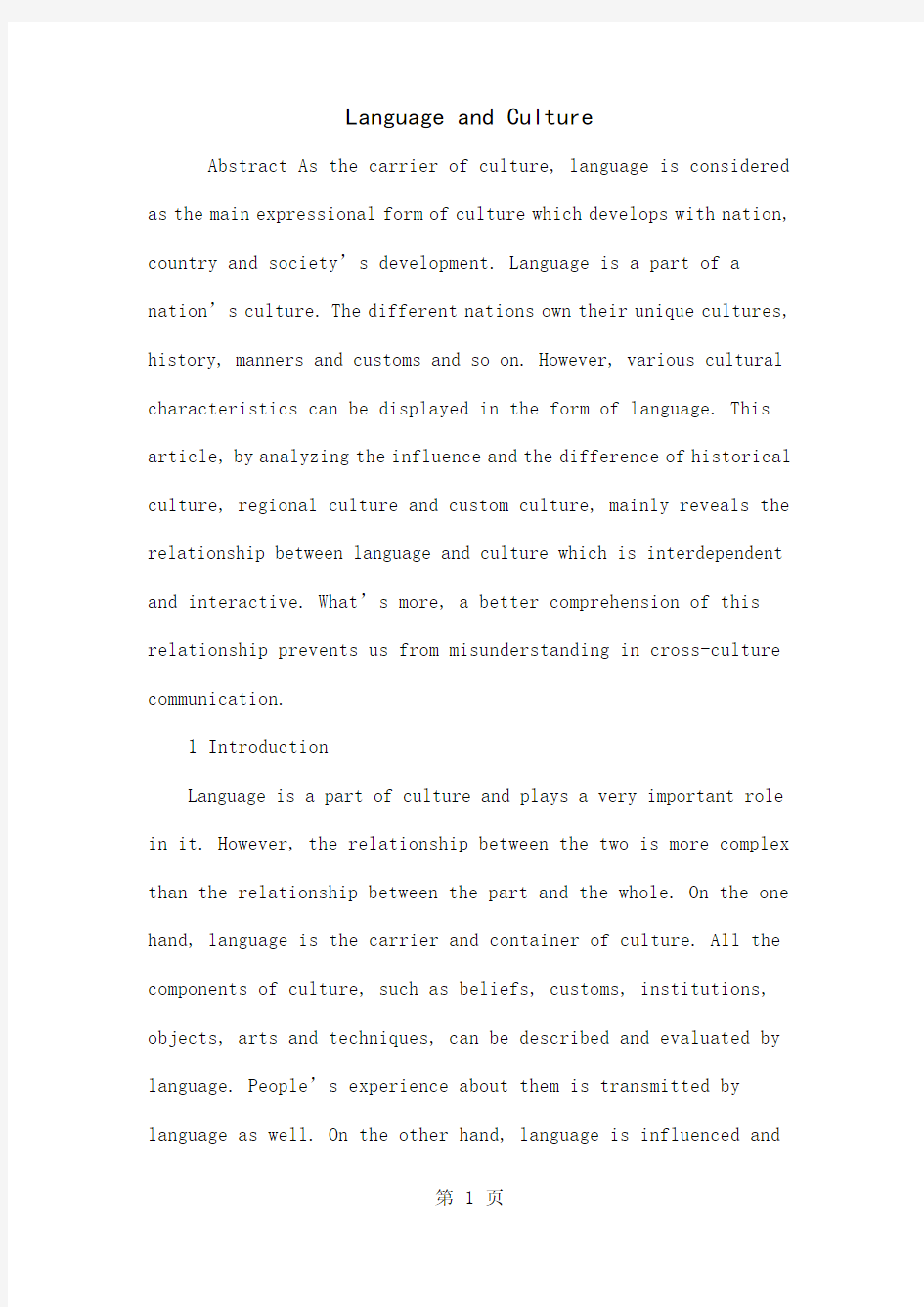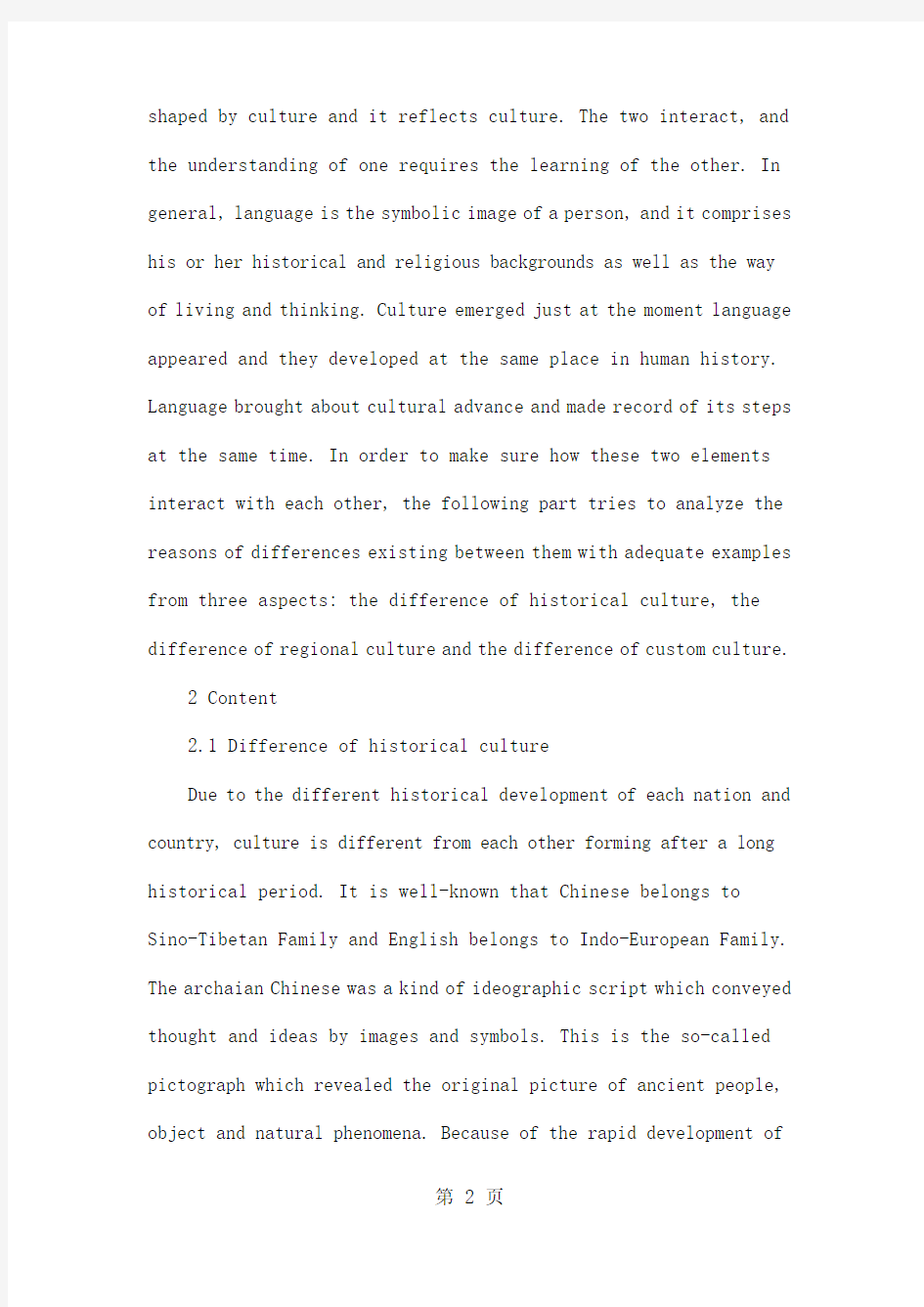Language and Culture精品文档5页


Language and Culture
Abstract As the carrier of culture, language is considered as the main expressional form of culture which develops with nation, country and society’s development. Language is a part of a nation’s culture. The different nations own their unique cultures, history, manners and customs and so on. However, various cultural characteristics can be displayed in the form of language. This article, by analyzing the influence and the difference of historical culture, regional culture and custom culture, mainly reveals the relationship between language and culture which is interdependent and interactive. What’s more, a better comprehension of this relationship prevents us from misunderstanding in cross-culture communication.
1 Introduction
Language is a part of culture and plays a very important role in it. However, the relationship between the two is more complex than the relationship between the part and the whole. On the one hand, language is the carrier and container of culture. All the components of culture, such as beliefs, customs, institutions, objects, arts and techniques, can be described and evaluated by language. People’s experience about them is transmitted by language as well. On the other hand, language is influenced and
shaped by culture and it reflects culture. The two interact, and the understanding of one requires the learning of the other. In general, language is the symbolic image of a person, and it comprises his or her historical and religious backgrounds as well as the way of living and thinking. Culture emerged just at the moment language appeared and they developed at the same place in human history. Language brought about cultural advance and made record of its steps at the same time. In order to make sure how these two elements interact with each other, the following part tries to analyze the reasons of differences existing between them with adequate examples from three aspects: the difference of historical culture, the difference of regional culture and the difference of custom culture.
2 Content
2.1 Difference of historical culture
Due to the different historical development of each nation and country, culture is different from each other forming after a long historical period. It is well-known that Chinese belongs to
Sino-Tibetan Family and English belongs to Indo-European Family. The archaian Chinese was a kind of ideographic script which conveyed thought and ideas by images and symbols. This is the so-called pictograph which revealed the original picture of ancient people, object and natural phenomena. Because of the rapid development of
human civilization, the increasing emergence of indicative character, associative character and morpheme-phonetic character turns Chinese into ideographic-oriented syllabic script. Chinese is a figurative language and it reflects reflect the close relationship between Chinese people and the objective nature. However, the beauty and the association of this language can never be translated into any other foreign languages adequately. Not only the archaian characters are difficult to understand for people from other historical culture backgrounds, but many trendy characters are hard to recognize, especially those netspeaks we frequently use nowadays. For example: “顶” means supporting others, “汗” indicates veneration, “晕” indicates astonishment, “555” means the state of crying, “88” refers to saying goodbye to others and “ps” is the abbreviation of “photoshop”, If we seldom surf the Internet and are isolated from the current tendency, lacking of the popular language and the knowledge can only make a big influence on getting information and communication.
Moreover, the word dragon is another ambiguous example. It is a kind of mystical animal with long body, squama and horn existing in ancient time which means power and good luck in China. However, the West cultures consider dragon as a large fierce animal with wings and a long tail, which can breathe out fire without any symbolic
